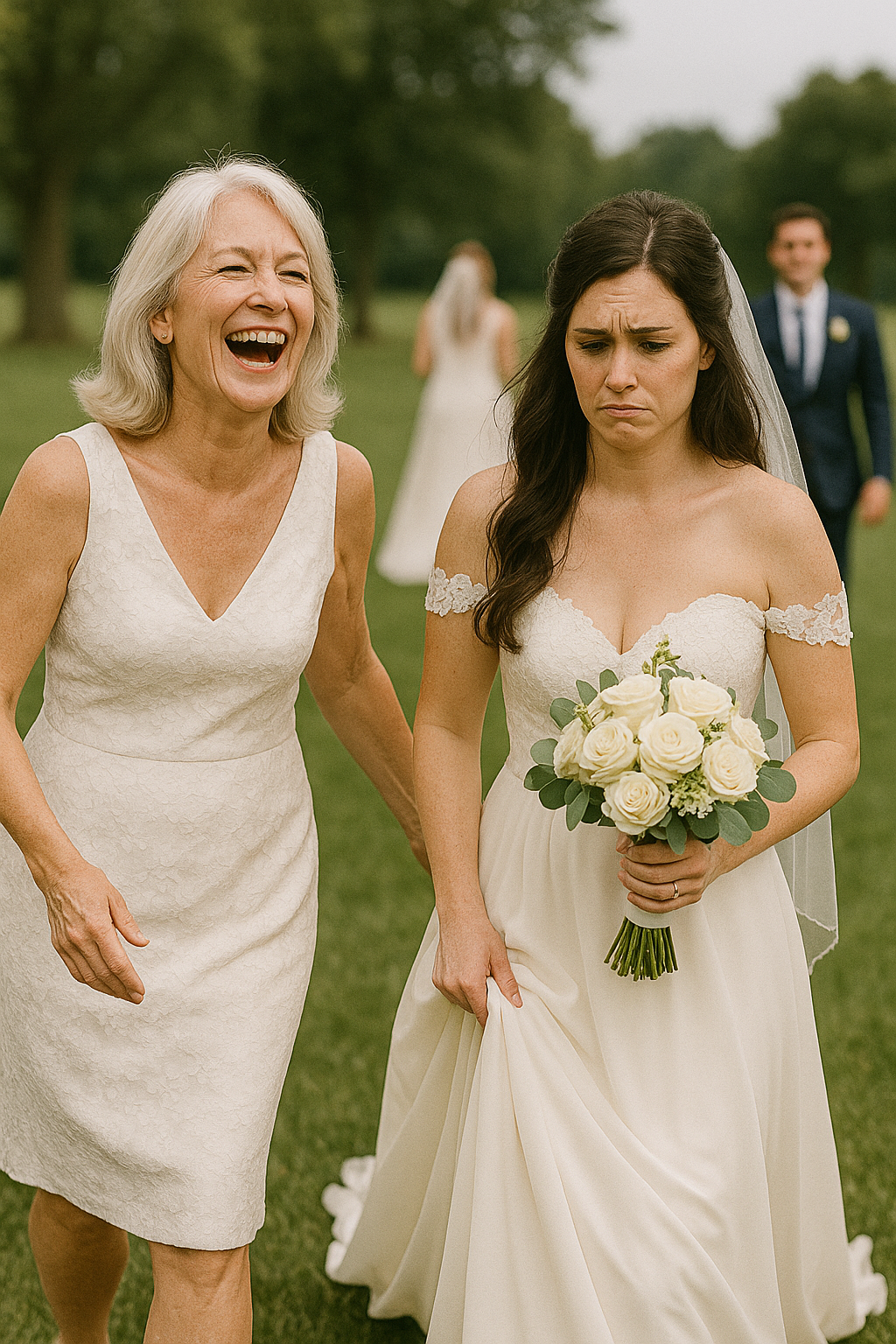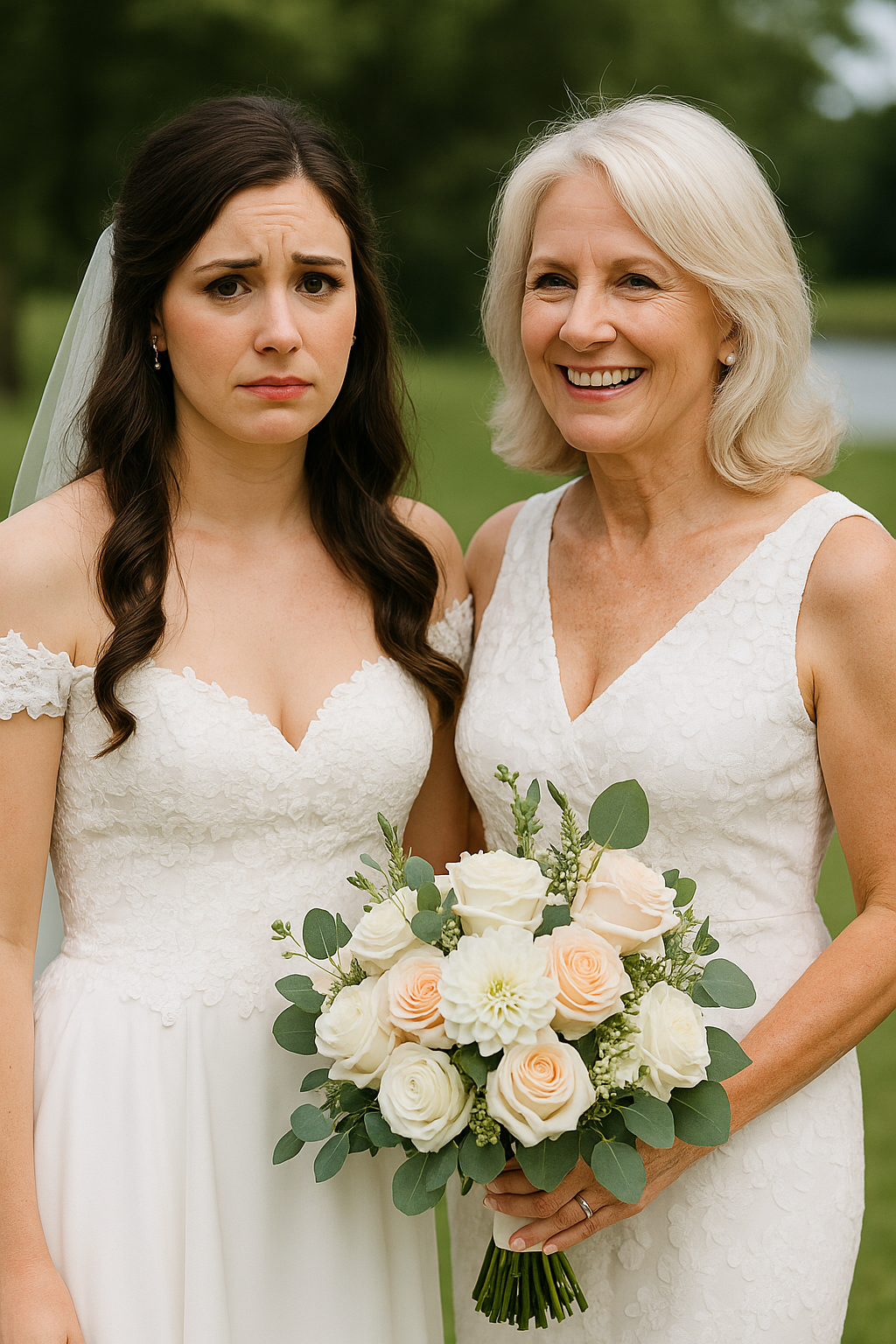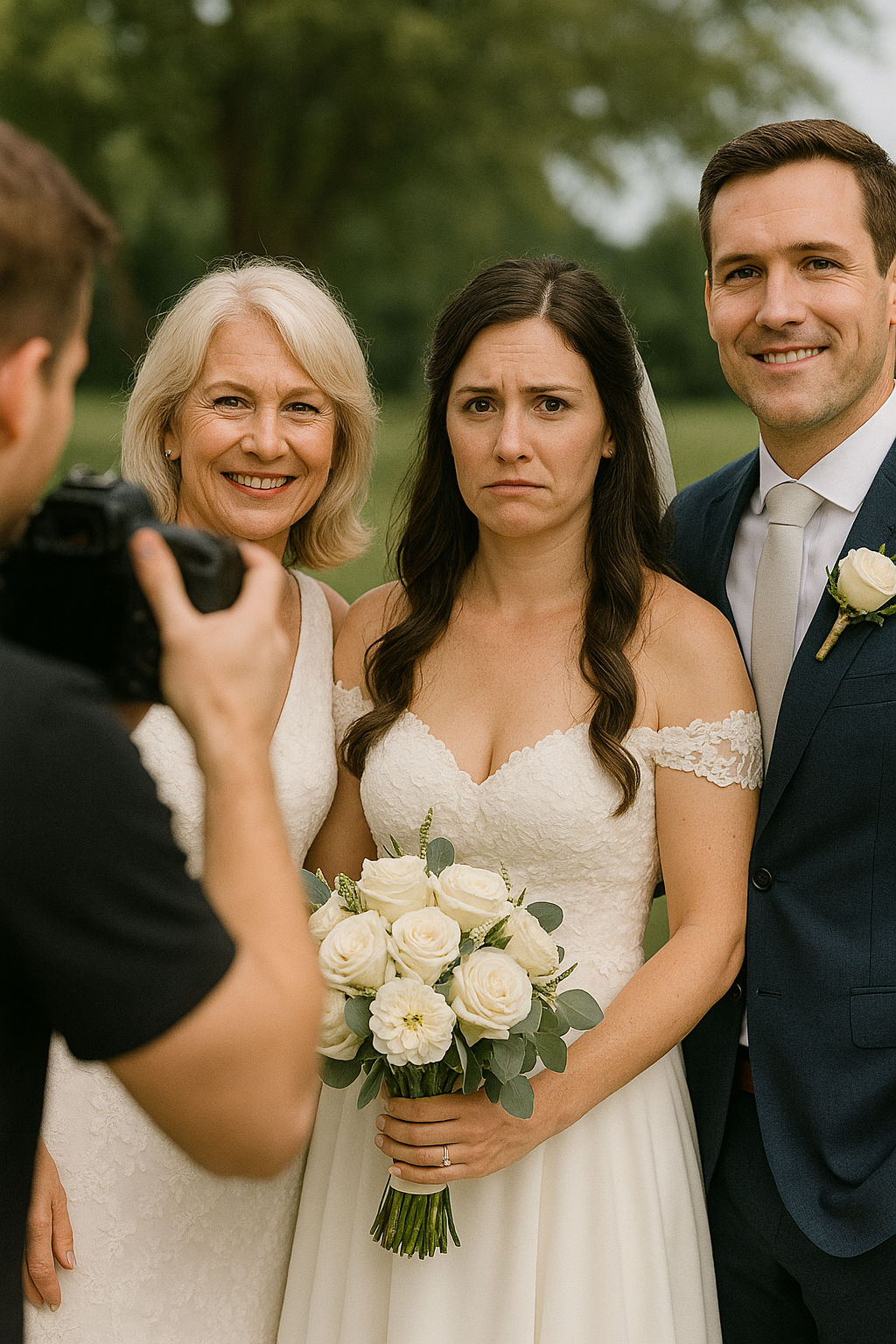If I’ve learned anything from planning a wedding, it’s this: you don’t just marry the man — you marry his mother, too. And in my case, that meant marrying into a lifelong competition I never signed up for.
My name is Ava, and my now-husband Daniel is the sweetest man alive. Patient, thoughtful, and completely blind to his mother’s manipulations. His mother, Judith, is what some might call “a presence.” She’s elegant, sophisticated, and as she constantly reminds us — “a former pageant queen.” Her hair? Never out of place. Her makeup? Flawless. Her wardrobe? Expensive and curated like a museum exhibit.
And her signature move at weddings? Wearing white.

Yes. White. Full-on, crisp, ivory or snow-white gowns. The kind that makes other guests do a double take, and leaves the bride burning with quiet rage.
Daniel’s older sister, Laura, got married three years before me. At her wedding, Judith wore a floor-length, off-the-shoulder white gown with pearls. She claimed she “had no idea” the bride would be wearing something similar.
“She’s wearing lace, darling,” Judith had said, feigning surprise. “This is satin. Completely different.”
Laura was livid. But Daniel just shrugged it off with his usual, “That’s just Mom.”
Then came Daniel’s cousin Maya’s wedding — and you guessed it. Judith did it again. This time she wore a sleek white jumpsuit with a sheer cape that flowed like a train behind her. I heard someone ask if she was renewing her vows.
Daniel finally confronted her that night.
“Mom, what are you doing?” he asked.
Judith laughed. “Oh, sweetheart. I can’t help it if white looks good on me. Should I wear black and pretend I’m attending a funeral?”
That was her logic.

So, when Daniel and I got engaged, I knew I had a choice: say nothing and hope she’d magically grow some self-awareness… or prepare for battle.
I chose the latter.
From the beginning, Judith made the planning process unbearable. She critiqued our venue (“Too rustic”), the caterer (“Do they serve gluten-free caviar?”), and even questioned my choice of a long veil.
“You have such a sweet face, Ava,” she told me with a polite smile. “You don’t want to hide it behind all that fabric, do you?”
I kept my cool. Barely.
When the invitations went out, I included a polite dress code request: “Guests are kindly asked to avoid wearing white, ivory, or champagne.” I thought this would do the trick.
It didn’t.
Two weeks before the wedding, I got a text from Judith with a picture of her planned outfit.
It was white.

Not just white — a shimmery, embellished sheath dress with feathers at the hem. She captioned it:
“Isn’t this darling? I thought it might match your theme!”
I stared at the screen. My hands shook.
Daniel saw my expression and immediately asked what was wrong. When I showed him the photo, he finally understood.
“She’s doing it again,” I whispered. “And this time, it’s my wedding.”
To his credit, Daniel tried. He told Judith it was important to me, that it was a clear boundary.
But she played her usual card.
“Oh, I didn’t know it would upset her so much. Why does everything have to be so dramatic? Should I just not come at all?”
At that point, I realized — logic wouldn’t work. Boundaries didn’t work. But embarrassment? That might just do the trick.
That’s when I looped in Nick, our wedding photographer.
Nick had been recommended by a friend and was known for his candid style and sense of humor. When I explained the situation, he didn’t bat an eye.
“She’s worn white to two other weddings?” he said. “You want to give her a little reality check, huh?”
I nodded. “I don’t want to ruin the day. But I also don’t want her stealing the spotlight again.”
He grinned. “Leave it to me.”
The big day arrived.
It was everything I’d dreamed of: the flowers, the music, Daniel waiting for me at the altar with misty eyes. We said our vows under a blooming arch, and I felt like the center of the universe — just like every bride should.
And yes… Judith showed up in the dress.
White. Feathers. A slit up the thigh. She strutted down the aisle like she was making a red carpet entrance. Guests exchanged stunned looks. A few even whispered. But Judith? She beamed, as if they were all admiring her.

I didn’t say a word. I just looked at Nick, who gave me a small nod.
At the reception, Judith worked the room like a celebrity. She took selfies, posed dramatically with champagne flutes, and made sure she was front and center in every group photo.
I smiled. And waited.
The next day, Nick sent us the teaser album — a “sneak peek” of our wedding photos.
We gathered with family for brunch and projected them onto the TV. Everyone oohed and aahed as the beautiful shots of the ceremony appeared. There were candid laughs, soft kisses, tearful toasts…
Then came the reception shots.
There was one of the bridesmaids laughing. Another of my dad dancing. And then…
A slideshow titled:
“The Other Woman in White.”
It was Judith. In every single picture — but not how she expected.
Nick had edited her differently from everyone else.
In every photo, her dress was made to look slightly off. One image showed her walking behind me — but he’d adjusted the lighting so she looked like a ghostly figure lurking in the background.
In another, she stood beside Daniel — but Nick had zoomed in on her with a humorous caption:
“Guess who missed the memo on white?”
My personal favorite? A group photo where all the guests looked stunning… and Judith was blurred out just enough to make her seem like an afterthought.
Laughter erupted in the room. Even Judith looked confused.
“Wait, what’s going on?” she asked, frowning.
Nick had even included a final slide:
“In Loving Memory of Bridal Boundaries (1992–2023)”
May they rest in peace.
Daniel choked on his mimosa.
Judith flushed crimson. “Is this supposed to be funny?”

I finally spoke up.
“No, Judith. It’s supposed to be a reminder. This day wasn’t about you. It never was.”
There was a long silence. Judith looked at Daniel, hoping for rescue. But he just sighed and said, “Mom… you really did cross a line.”
To everyone’s surprise — including mine — she stood up, quietly left the room, and didn’t say another word the rest of the brunch.
A week later, Judith called me.
Her voice was softer than I’d ever heard it.
“I wanted to say I’m sorry,” she said. “I didn’t realize how much I was hurting people. I just… I guess I liked the attention more than I thought.”
I was stunned.
She continued. “The pictures were humiliating. But maybe I needed that. Thank you for not screaming or causing a scene. You handled it with more grace than I probably deserved.”
I accepted her apology.
And true to her word — at the next family wedding six months later, Judith showed up in a beautiful navy blue gown. No feathers. No white. No drama.
Daniel and I now joke that our wedding photographer did more than capture memories — he restored justice.
Judith and I will probably never be best friends, and that’s okay. But now we coexist peacefully. She plays with our baby boy, compliments me without backhanded jabs, and sticks to appropriate colors at formal events.
And every now and then, I’ll catch her glancing at the framed wedding photo in our hallway — the one where she’s artfully blurred in the background — and she’ll just smile and shake her head.
What can we learn from this story?
Sometimes people don’t see the line they’ve crossed — until you highlight it, frame it, and put it in a photo album. With the right mix of humor and boundaries, even the most entitled behavior can be corrected. And no one forgets when the camera catches the truth.
This piece is inspired by stories from the everyday lives of our readers and written by a professional writer. Any resemblance to actual names or locations is purely coincidental. All images are for illustration purposes only.


